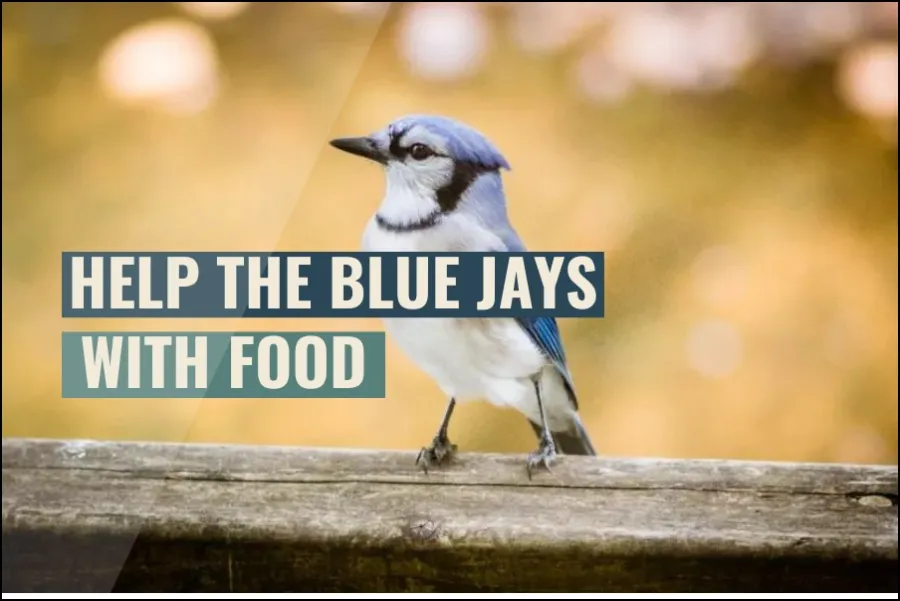
Blue jays are colorful and intelligent birds that are native to North America and known for their diverse diet. In this article, we will explore the various types of food that blue jays consume, including seeds, insects, fruits, and other invertebrates, as well as strategies for attracting and supporting these birds in your backyard.
Blue jays eat seeds, insects, fruits, and other invertebrates. Provide seeds in a feeder or on a tray, create an insect garden, offer sliced fruit or create a fruit feeder, and encourage caching by providing seeds or food in containers or buried holes. Keep food fresh and offer a small amount at a time to prevent overfeeding.
Whether you are an experienced birdwatcher or just starting out, providing food for blue jays can be a fun and rewarding way to connect with nature and learn more about these fascinating birds. So, read on to find out more about the eating habits of blue jays and how you can support them in your backyard.
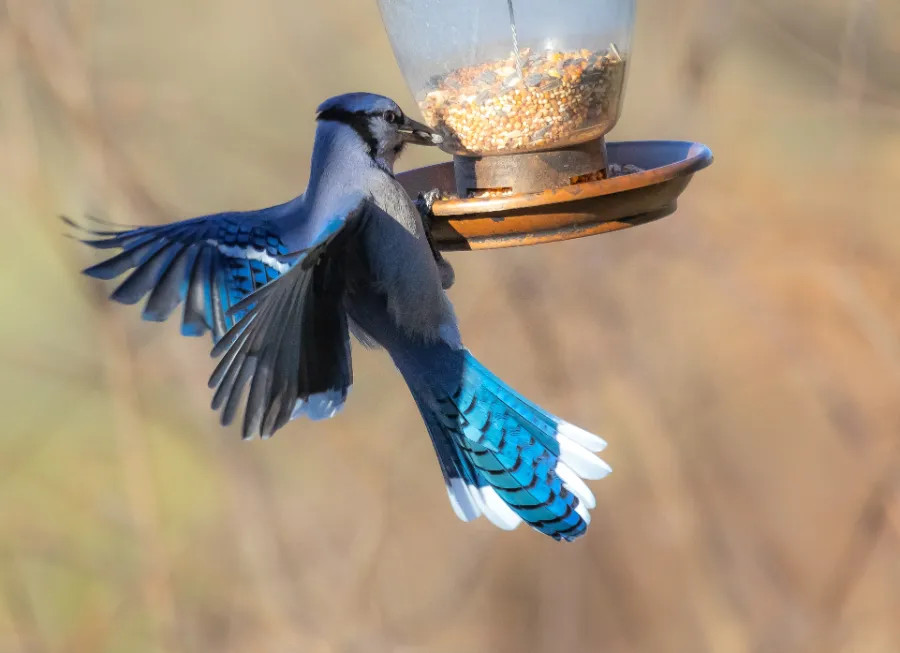
1. Seeds: A Staple of the Blue Jay Diet
One of the main staples of the blue jay’s diet is seeds, and they are particularly fond of acorns, which they often collect and store for the winter months. In addition to acorns, blue jays also enjoy a variety of other seeds, including those from trees, shrubs, and grasses. They are also known to eat peanuts, sunflower seeds, and corn, and they will often visit backyard bird feeders to supplement their diet with these and other types of seeds. In terms of their preferred seeds, blue jays seem to have a preference for larger seeds such as acorns and peanuts, as well as seeds with a high oil content. They are also known to be attracted to brightly colored seeds, such as those found in many commercial birdseed mixes.
Here’s how you can help to provide the blue jay with seeds.
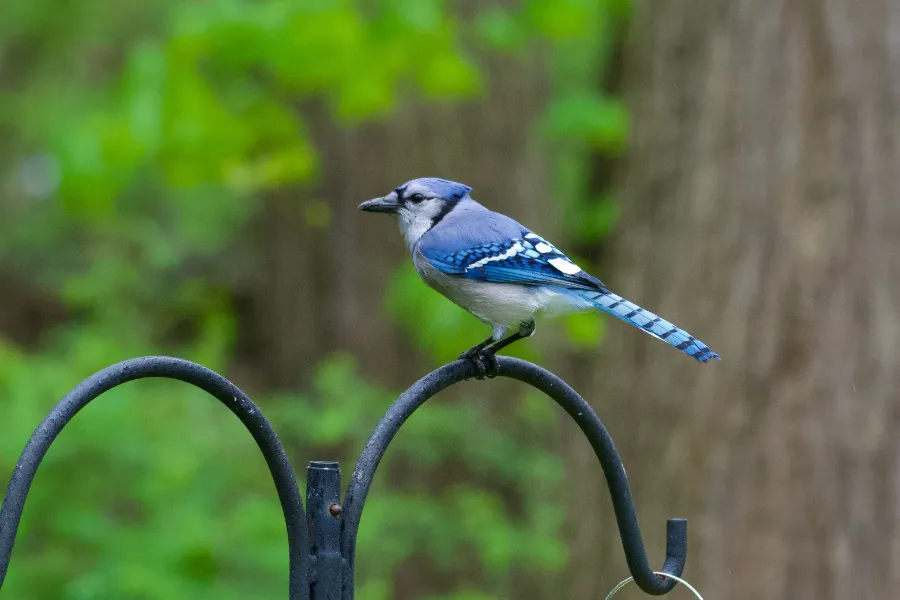
2. Insects and Other Invertebrates: A Nutritious Supplement to the Blue Jay Diet
In addition to seeds, blue jays are also known to eat insects and other invertebrates. They will often forage for insects in the ground or in trees, and they have been known to hunt for spiders, beetles, and caterpillars. They are also known to eat snails and other small mollusks, and they have been observed feeding on small frogs and lizards on occasion. When it comes to insects, blue jays seem to have a preference for larger, protein-rich insects such as beetles and caterpillars, although they will also consume smaller insects when they are available.
Here’s how you can provide the blue jay with insects and other invertebrates
3. Fruits: A Sweet Addition to the Blue Jay Diet
Blue jays are also known to eat a variety of fruits, including cherries, berries, and apples. They are particularly fond of suet, which is a type of animal fat that is often provided to birds at backyard feeders. They will also consume nectar from flowers, and they have been known to visit hummingbird feeders in search of this sweet treat.
Here’s how you can provide the blue jay with fruits
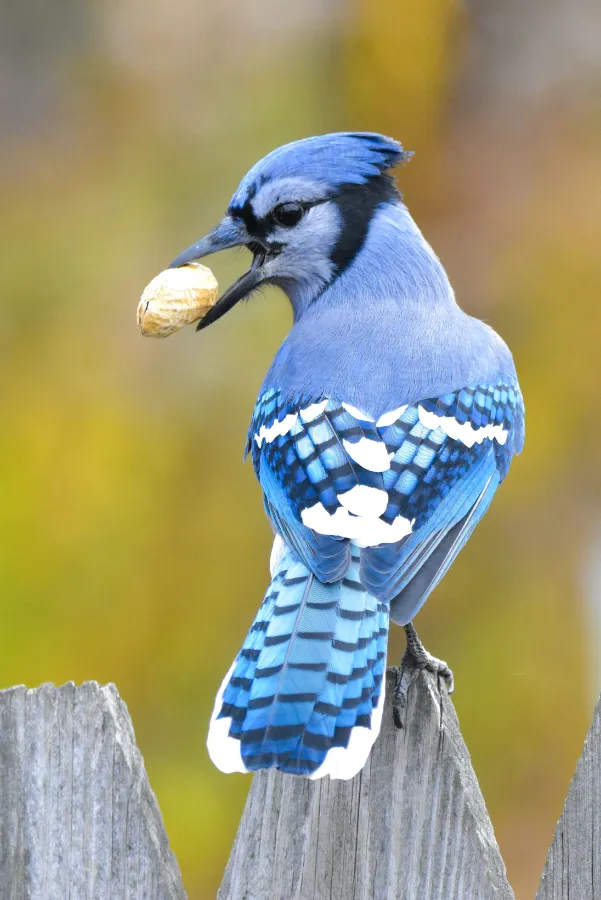
4. Caching: A Strategy for Surviving Tough Times
One interesting aspect of the blue jay’s diet is that they are known to cache, or store, food for future use. They will often collect and hide acorns and other seeds in the ground or in trees, and they have been observed retrieving these stored food items during times of scarcity. This behavior is thought to be an adaptation that allows blue jays to survive in areas where food may be scarce at certain times of the year.
Here’s how you can help the blue jay with caching
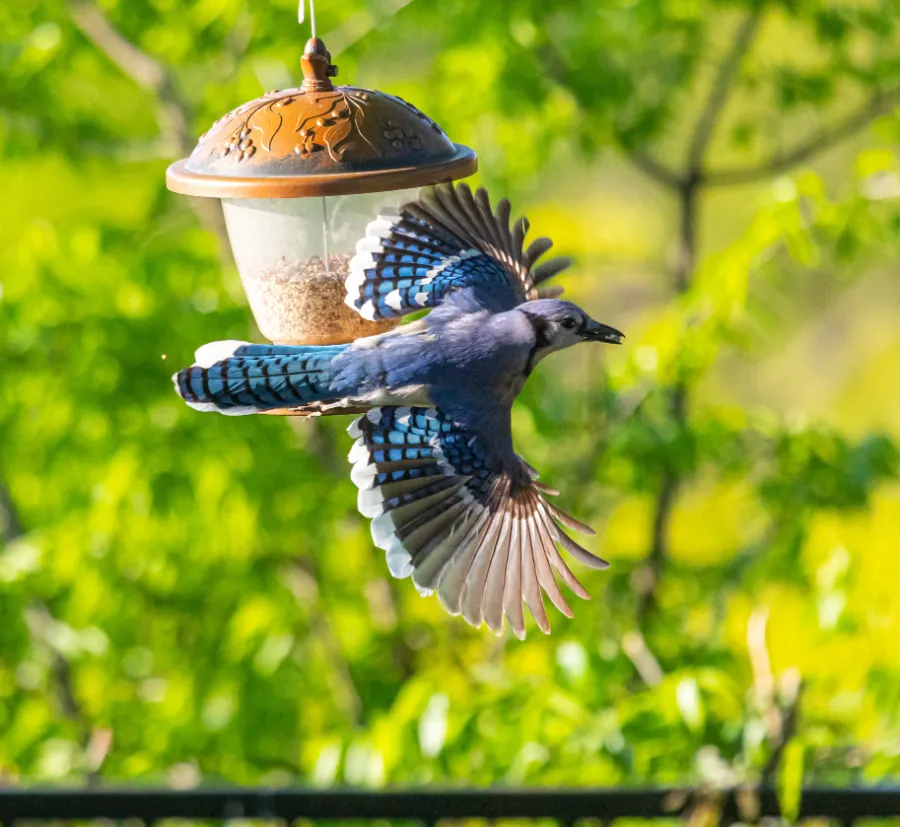
Provide the blue jay with seeds
Providing seeds to blue jays can be a great way to attract these beautiful birds to your backyard, and there are a few different options for doing so. One of the simplest ways to provide seeds is to use a commercial birdseed mix, which can be purchased at most pet stores or online. These mixes often contain a variety of seeds that are attractive to blue jays, such as sunflower seeds, peanuts, and millet. You can also create your own seed mix by combining a variety of seeds that blue jays are known to enjoy, such as acorns, corn, and safflower seeds.
To prepare seeds for blue jays, you can simply place them in a feeder or on a flat surface, such as a tray or platform feeder. It is important to keep the seeds fresh and dry, as stale or wet seeds can spoil and become unappealing to the birds. You should also clean your feeders regularly to prevent the build-up of mold or bacteria, which can be harmful to the birds. Read my best tips and tricks to keep your seeds in the best condition.
Read more about what seeds blue jays prefer and which are their favorite.
Provide the blue jay with insects and other invertebrates
In addition to seeds, blue jays are also known to eat insects and other invertebrates. To provide these types of food to blue jays, you can create a small insect garden in your backyard by planting a variety of flowering plants that attract insects. You can also provide a shallow dish of water to help attract insects to your yard, as many types of insects are attracted to moisture.
Another option is to purchase live insects, such as mealworms or crickets, and offer them to the blue jays as a treat. These can be purchased at most pet stores or online, and they can be fed to the birds directly from your hand or placed in a shallow dish. It is important to only offer a small number of insects at a time, as blue jays will quickly consume any food that is offered to them and may become overweight if they are overfed.
Read more about what insects and invertebrates blue jays like to eat here.
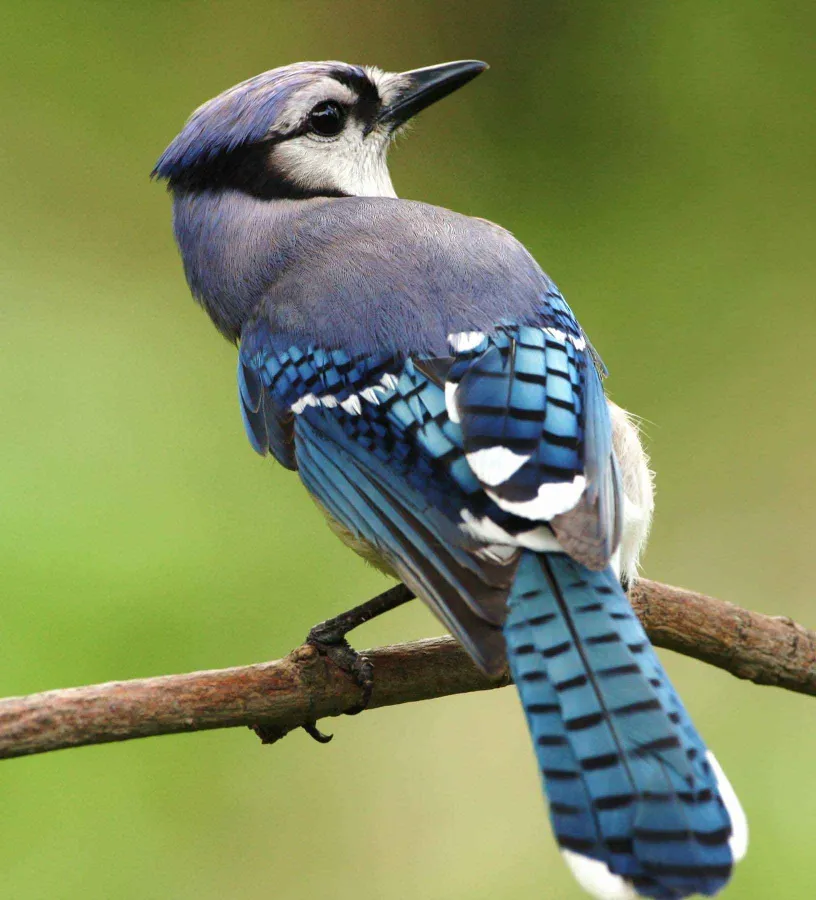
Provide the blue jay with fruits
Blue jays are also known to eat a variety of fruits, including cherries, berries, and apples. To provide these types of food to blue jays, you can plant fruit-bearing trees or shrubs in your backyard, or you can offer sliced fruit directly to the birds. You can also create a fruit feeder by filling a shallow dish with slices of fruit, or by placing fruit on a skewer or wire for the birds to perch on.
It is important to remember that fruits can spoil quickly, so you should only offer a small amount at a time and replace the fruit if it becomes bruised or overripe. You should also avoid using pesticides or other chemicals on your fruit trees or shrubs, as these can be harmful to the birds if ingested.
Read more about what blue jays favorite fruits are and how you can help them here.
Provide help to the blue jay with caching
Blue jays are known for their caching behavior, in which they collect and store food for future use. To encourage this behavior, you can provide a variety of seeds and other food items that blue jays can cache in your backyard. This can be done by placing seeds or other food items in small containers or by burying them in shallow holes in the ground.
It is important to note that blue jays are opportunistic feeders and will often cache any food that is readily available to them. This can include seeds, nuts, and even small objects such as pebbles or beads.
Read more about helping blue jays with caching
In conclusion
Blue jays are omnivorous birds native to North America that are known for their striking blue and white plumage, distinctive calls, and diverse diet. They primarily consume seeds, including acorns, peanuts, sunflower seeds, and corn, and they are particularly fond of seeds with a high oil content and larger seeds such as acorns and peanuts. In addition to seeds, blue jays also eat insects and other invertebrates such as spiders, beetles, caterpillars, snails, and small frogs and lizards, with a preference for larger, protein-rich insects like beetles and caterpillars. They also consume a variety of fruits like cherries, berries, and apples, as well as suet and nectar from flowers.
To help blue jays in your backyard, there are several ways you can provide these different types of food. For seeds, you can use a commercial birdseed mix or create your own mix with a variety of seeds that blue jays are known to enjoy. You can place the seeds in a feeder or on a flat surface like a tray or platform feeder, and it’s important to keep the seeds fresh and dry by replacing them if they become stale or wet. You should also clean your feeders regularly to prevent the build-up of mold or bacteria that could be harmful to the birds.
To provide insects and other invertebrates to blue jays, you can create a small insect garden in your backyard by planting a variety of flowering plants that attract insects. You can also provide a shallow dish of water to help attract insects to your yard, as many types of insects are attracted to moisture. Alternatively, you can purchase live insects like mealworms or crickets and offer them to the blue jays as a treat, either directly from your hand or in a shallow dish. It’s important to only offer a small number of insects at a time to prevent overfeeding, and to be aware that some insects may carry diseases that could be transmitted to the birds.
For fruits, you can plant fruit-bearing trees or shrubs in your backyard or offer sliced fruit directly to the blue jays. You can also create a fruit feeder by filling a shallow dish with slices of fruit or by placing fruit on a skewer or wire for the birds to perch on. As with seeds and insects, it’s important to keep the fruit fresh and avoid using pesticides or other chemicals that could be harmful to the birds.
Blue jays are also known for their caching behavior, in which they collect and store food for future use. To encourage this behavior in your backyard, you can provide a variety of seeds and other food items that blue jays can cache. This can be done by placing seeds or other food items in small containers or by burying them in shallow holes in the ground. It’s important to note that blue jays are opportunistic feeders and will often cache any food that is readily available to them, so it’s important to monitor their caching behavior to prevent overfeeding or the accumulation of non-food items.
Overall, blue jays are diverse eaters that consume a wide range of seeds, insects, and fruits. By providing a variety of these food types in your backyard, you can help attract and support these beautiful birds. It’s important to remember to keep all food fresh and to only offer a small amount at a time to prevent overfeeding, and to be mindful of any potential health risks associated with certain food items.
